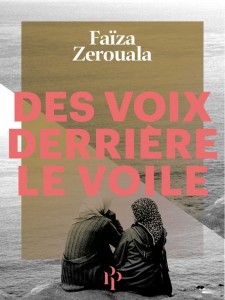Editor’s Note: This week’s Time magazine featured an 18-year-old Afghan girl named Aisha on the cover. Aisha’s face is framed with dark hair and a loose scarf; it looks like any other portrait Time might publish. Except there is something missing: Aisha’s nose. Her nose and ears were cut off as punishment for running away from abusive in-laws—members of the Taliban handed down this punishment. Her portrait appears next to the words “What happens if we leave Afghanistan.”
MMW has decided not republish the photo of Aisha that appears on this week’s edition of Time magazine or include a link to it.
Sara: In a way, all photographers exploit their subjects. It is a profession, after all, and the bottom line involves distributing the photos and making a living from that distribution. Sourcing that argument, we can also say that all representational artists are of a manner exploitative, since they draw on human experiences that aren’t their own and create photos that often only cater to markets with little understanding of the represented experience. And then they sell or display that art, using it however they please. But in a visually saturated culture, photographs are the exploitative currency of choice. They capture our bodies in vignettes, bits of remaining shrapnel long after the end of a war. They hold what Susan Sontag called “the presumption of veracity,” which gives them unparalleled authority.
The Time cover is no exception to this. It is, by all accounts, a horrifying photo, shot like Steve McCurry’s frank 1984 portrait of Sharbat Gula at a refugee camp. It bears startling similarity to some of Sebastiao Salgado’s photos—photos that have themselves been called “poverty porn” for their alleged attempt to capture and own the unreachable experience of the Global South. And while there is a long American media history of using the stories and photos of Afghan women to advocate for political action (which in the end has very little to do with those women), the photograph itself is rarely ever the culprit.
The photograph, as long as it was taken consensually (and in Aisha’s case it was), doesn’t constitute its own misuse, in this case. There wasn’t anything inherently wrong with photographing Aisha, or telling her story. Do I think there are politics involved here? Of course. And we should take note of them. But in not displaying the photo we’re losing a chance to contextualize it in a way that Time didn’t.
You can read more of my thoughts here.
Fatemeh: Aisha consented to having her picture taken; I have no qualms with her decision. However, I have major issues with Time positioning her on the cover with the headline “What happens if we leave Afghanistan.” It assumes that the US presence is keeping Afghan women safe (which Aisha’s mutilation disproves) and without the U.S., Afghanistan will be a terrible place, especially for women.
Krista: “What Happens if We Leave Afghanistan?” Well, the obvious response is that this violence happened while the international forces were in Afghanistan, so the logic leading to the conclusion that things would necessarily be worse if “we” left isn’t exactly clear. (It’s pretty obvious that this is the conclusion suggested by the cover, which makes the magazine’s statement accompanying the cover photo that “We do not run this story or show this image either in support of the U.S. war effort or in opposition to it” a little hard to believe.)
The thing is, although “saving women” has been part of the Western rhetoric throughout a large part of this invasion, Afghan women have rarely been much of a priority for the coalition forces, whose goal of conquering the Taliban has had them allied with many a violent misogynist over the years of the occupation. This photo, with its accompanying caption, perpetuates the myth of the foreign occupiers as allies and saviors of Afghan women, though this has never really been the case. (Not to get into a debate on whether the situation for women has improved at all, just that I don’t think anyone can count on these occupiers to always have women’s best interests at heart.) It also implies that violence is only being committed by the Taliban, leaving out any pictures of mutilated bodies caused by coalition attacks, violence that is happening precisely because “we” are in Afghanistan.
With regard to the actual photo, I find it disturbing to see it being so publicly circulated as a way of making a specific political point. The young woman in the photo–frozen in an image that defines her only by the violence that has been enacted upon her–is reduced to the “what” that will happen if “we” leave.
I would also argue that the photo objectifies its subject in a specifically racist way, in that the body of a woman of color is used to make a statement in a way that white bodies rarely are. I find it really hard to imagine a white face being used in the same way on the cover, no matter what the political statement it was trying to make; even when journalists focus on telling and showing “the true story,” regardless of how upsetting it might be, there are often decisions made not to publish certain images out of respect for the dignity of their subjects. I realize that the woman in this photo agreed to have her picture taken and circulated, which certainly does make this case much more complex, but I still find it invasive and deeply troubling.
Tasnim: The deliberation over the publication of this image doesn’t strike me as thoughtful or scrupulous, but as a blatant attempt to push its provocative-ness; Aisha’s image adds weight to the line “what happens if we leave,” which guilts the reader into supporting the war on terror. The exploitation of women’s rights issues to give credence to a floundering war depends on images like this to push the message that women in Iraq and Afghanistan are better off now. The idea of a heroic liberating army stemming the tide of medieval, misogynist barbarity will always be great propaganda, mainly because of how easy it seems to be to for people to believe.
It is that reliance on prejudice which lies behind the case in Afghanistan where U.S. soldiers dug bullets out of three women’s bodies and then stabbed them to make it look like their families had killed them, and the attempted cover-up of the case in Iraq where U.S. soldiers blamed Sunni insurgents for the rape of a 14-year-old girl and the murder of her and her family.
Aisha’s neighbors recognized the abuse she had suffered and took her to the police, like any sane people would. But Time magazine seems to want its readers to believe that there are no sane people in Afghanistan. This whole story hinges on the reader’s preparedness to believe that this kind of abuse is “natural” for “them.”
Depressingly, quite a few commentators on this seem to believe the punishment was part of that bogeyman Sharia Law, and that Afghanistan is Agrabah. Yes, Time magazine confirms that Disney’s Aladdin had it right: “They cut off your nose if they don’t like your face.” What’s sad about the Time magazine’s use of this “portrait of Aisha” is that it is not about Aisha at all, but simply about pushing the reader into supporting the U.S. presence in Afghanistan. I wonder what the reaction would be if the image was of a woman mutilated in a U.S. raid or drone attack, with the headline “what happens if we stay.”
There are more feminist perspectives at Feministing and Jezebel.











